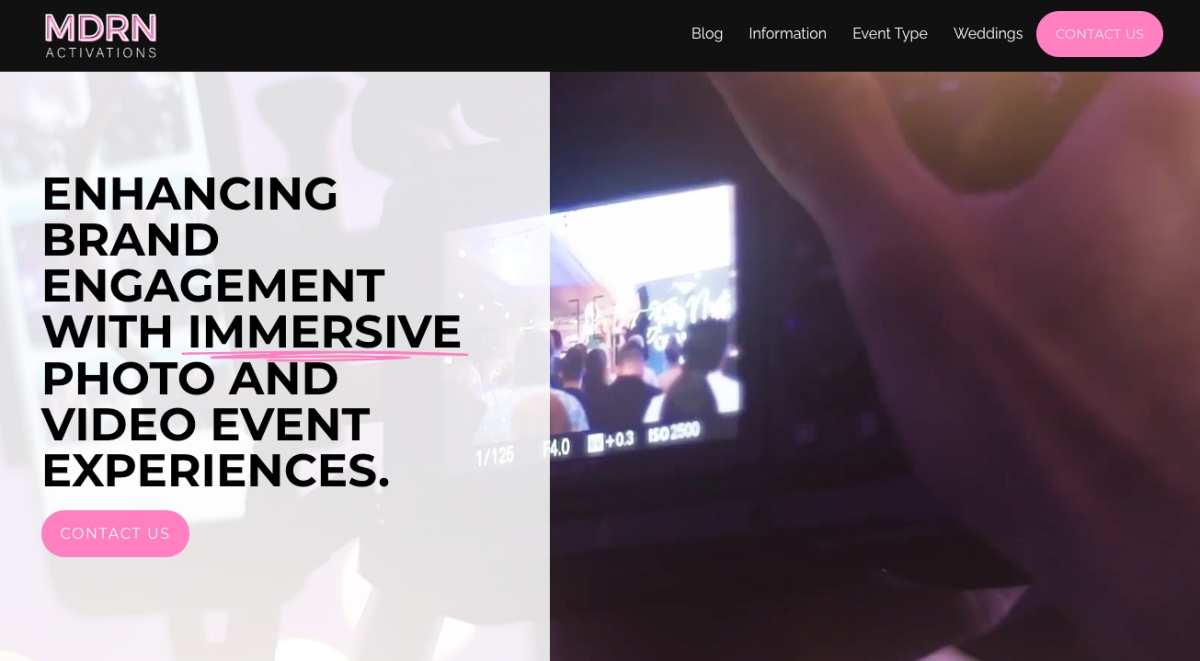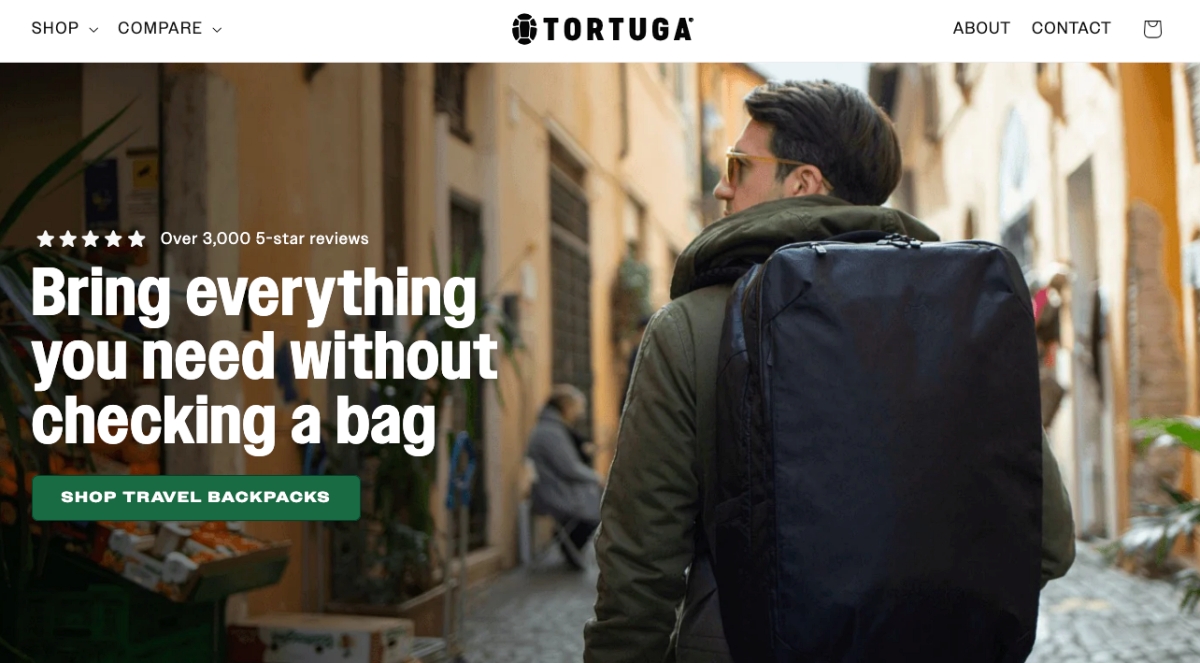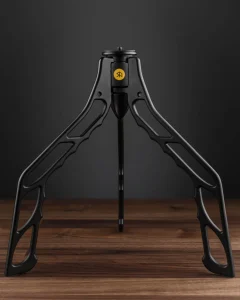Congrats! You’ve got a great side hustle idea … now you just need money to get it off the ground.
Even though many small businesses can have pretty low startup costs, most will still require at least some startup capital.
And having enough money to start and grow your business is important. According to a recent study by CB Insights, 38% of startups fail because they can’t raise new capital. Similarly, “money” is consistently among the top struggles for side hustle founders.
In this guide, I’ll share the 9 most popular ways to fund your new business, so you can choose the path that makes the most sense for you, complete with real-world examples and actionable strategies you can use today.
Ready? Let’s do it!
Sponsors
- Mint Mobile — Cut your wireless bill to $15 a month!
- Indeed – Start hiring NOW with a $75 sponsored job credit to upgrade your job post!
- OpenPhone — Get 20% off of your first 6 months!
- Shopify — Sign up for a $1 per month trial!
3 Primary Types of Startup Funding
There are three primary types of financing for new businesses:
- Bootstrapping
- Debt financing
- Equity financing
The main difference between them is ownership.
Bootstrapping is about investing your personal cash and funding streams.
Debt finance involves borrowing money from an external source like a bank. You agree to repay the borrowed amount plus interest over a set period.
Both these options allow you to maintain control of the business.
On the other hand, equity finance involves selling shares or ownership stakes to investors. This means you can access funds without incurring debt. But you’ll have to share ownership and potential future profits with investors.
1. Bootstrapping
Bootstrapping is how most small businesses and side hustles get started.
Instead of seeking funds from investors or lenders, you rely on your own money and hard work to build your business.
According to the U.S. Chamber of Commerce, 78% of small business owners use their own funds to start their businesses. Bootstrapping is how I started my first business, and how the vast majority of Side Hustle Show guests started theirs.
Bootstrappers take a lean approach. You focus on the essentials, trim unnecessary expenses, and make sure every cent counts. It’s about being resourceful, stretching your dollars, and learning to do more with less.
Real-Life Example: My Red Paperclip Story

In Episode 299, I talked a little bit about this early journey of taking a little bit of savings and investing it into the next thing.
First step was savings from part-time high school jobs and buying a pickup truck for $3500 to start painting houses.
Then I took $13,000 from painting houses and put it as a down payment on an investment property. Then once again took $10k from the sale of that house and put it into my online shoe business.
And then since then, everything has been less than $500 to start.
Alternative Strategy: Borrow Against Your 401k
- Loan limit: 50% of your vested balance or $50,000, whichever is less
- How it works: You borrow from yourself and repay with interest (which goes back into your account)
- Pros: No credit score impact if you default
- Cons: You miss out on potential returns those funds would have earned
Tips for Bootstrappers
- Start Lean: Focus on the essentials and avoid unnecessary expenses. Keep your overhead costs low and prioritize what’s crucial for your business to function.
- Do-It-Yourself (DIY): Take on tasks that you can handle yourself initially. It’s an opportunity to learn essential skills that will help you run your business.
- Negotiate Everything: Try to get the best deals with suppliers, vendors, and contractors. Small savings can add up over time.
2. Friends and Family
Friends and family want to see you succeed. They may be able to offer financial backing to help you start your business.
A recent study from Clutch found that 22% of founders received funding from friends or family in the first three months of launching their businesses.
But this isn’t something you want to rush into — the last thing you want is to strain relationships with people close to you.
You need to be as open and transparent as possible. Share your vision for the business, and outline the potential risks and rewards. Transparency is essential to ensure everyone is on the same page.
Real-Life Example: Cat Bloch’s Photo Booth Empire

In Episode 471, Cat talked about how she needed about $20k CAD to start her photo booth business. The equipment alone cost $13k after conversion, taxes, and import fees.
Her bold approach: “I have a relationship with money… scared money don’t make money. When I have this gut feeling that I know I need to do something, I don’t even think twice about spending that money.”
She put the deposit on her parents’ emergency credit card, giving herself 30 days to explain the charge. The risk paid off because she built one of the largest photo booth companies in Canada.
Tips for Seeking Funding from Friends and Family:
- Be Clear and Honest: Mixing your business and personal life always comes with challenges. Be honest and open about your business plan and the potential risks and rewards.
- Treat it Professionally: You’re entering a legal agreement, so treat it professionally. That means formalizing agreements in writing and clarifying expectations.
- Deliver on Your Promises: If you commit to repaying a personal loan or providing a return on investment by a certain date, make sure you deliver.
3. Business Credit Cards: Convenient Cash Flow Funding
Business credit cards work similarly to personal credit cards. You can access a revolving line of credit to make purchases, manage expenses, and address cash flow gaps.
It’s a popular way to access credit. Around 67% of small business owners currently have a business credit card.
They often come with perks like cashback, travel points, or discounts on business-related purchases.
While business credit cards can be a helpful funding tool, they have potential pitfalls. You’ll need to keep up with monthly repayments and use them responsibly to avoid falling into debt traps.
Tips for Using Business Credit Cards:
- Make Timely Payments: Pay credit card bills on time to maintain a positive credit history and avoid late fees.
- Separate Business and Personal Expenses: Keep your business and personal expenses separate. Get a dedicated business credit card to avoid confusion and simplify bookkeeping and tax reporting.
- Take Advantage of Promotional Offers: Some credit cards offer an introductory period with 0% rates on purchases or balance transfers. This can be useful if you have significant business expenses coming up or want to consolidate existing debt. Just ensure you pay off the balance before the promotional period ends.
4. Bank Loans: The Traditional Funding Route
Business loans are a tried and tested way to secure capital. In 2021, 34% of small businesses applied for a loan.
A bank loan provides a lump sum that must be repaid over a specified period, usually with interest.
From traditional term loans to Small Business Administration (SBA) loans, each type of bank loan serves different purposes.
Factors like interest rates and collateral requirements play a vital role in deciding which option is right for your business.
Real-Life Example #1: Patagonia

Patagonia is an excellent example of a business that utilized bank loans to fuel its expansion. In the early 1990s, the well-known outdoor clothing company experienced a significant increase in product demand.
You can finance growth while preserving ownership and control.
Real-life Example #2: Tortuga Backpacks

Jeremy Michael Cohen and Fred Perotta from Episode 143 used multiple financing sources for their initial production runs.
“We re-upped the loan we had with the Jewish free loan association, paid off some of it and re-extended our line of credit. Then we did a small loan with Lending Club, which is a peer-to-peer loan platform, plus kicked in a little bit more of our own money.”
Fun fact: I’ve still got my Tortuga backpack, and it’s been with me on pretty much every trip the last 10 years!
Tip: There are specialized platforms for inventory funding for e-commerce brands. You’ll pay higher interest rates, but they’re designed for quick turnaround — use the funds to get inventory, generate sales, pay off the loan, and recycle capital into growth.
Tips for Securing a Bank Business Loan
- Improve Creditworthiness: You’ll need a healthy credit score and strong financial profile to secure good interest rates from lenders.
- Be Prepared: Gather all necessary financial documents and be ready to provide information to support your loan application.
- Borrow Responsibly: Only borrow what you need and have a solid plan for repaying the loan on time.
5. Pre-Sell Your Solution
The fastest way to test if your side hustle idea has legs is to ask people to pay for it — before you’ve built anything.
I’ve done this for a couple different digital products. The process works like this:
- Create a brief description of that the product will be
- Ask people to pre-order it (often for a discounted price)
- If you get a critical mass, then go and build it
That’s what I did with The Traffic Course, my online SEO course. I said if I got 20 pre-sale orders, I’d go ahead and create it. Otherwise, I would have refunded everyone.
It makes for a quick-and-easy way to validate your ideas with actual dollars, so you don’t waste time creating something nobody wants.
Real-Life Example #1: Abbey Ashley’s $8,000 Pre-Sale
Abbey had the idea for a virtual assistant course but wanted to validate demand first. So she sent an email to her audience if anyone was interested in that topic.
She created what the modules would be, listed them out, and offered the course at about half price (around $400-500) where she knew it would eventually be a $900-1,000 product.
She then had about 16 people buy from her list of a thousand. So she made $8,000 from that tactic, just asking people before she even created the course.
But if you don’t have an existing audience, you have to get a little more creative, like the example below illustrates.
Real-Life Example #2: John Logar
John Logar is an Australian business consultant who believes in this pre-selling model of fundraising. In fact, he pre-sold $120k worth of software — that didn’t exist yet — starting with no audience at all.
His method involved talking with business leaders to uncover expensive pain points, and then proposing to build the solution.
In one example, he identified a $250,000 annual problem for a potential client:
- Posted a job on oDesk (now Upwork) outlining the solution needed
- Within 10 minutes, got 16 quotes ranging from $800-$1,600
- Doubled the highest quote for safety ($3,200 total development cost)
- Quoted the client $30,000 ($15,000 upfront, $15,000 on delivery)
- Closed the deal in one conversation
The result: $27,600 profit on a one-hour conversation and $2,400 in actual development costs.
Tips for Pre-Sale Success
- Cultivate Relationships: Trust is key when you’re asking people to buy a product or service that doesn’t exist yet.
- Take Feedback and Direction: Your pre-sale customers can provide helpful guidance on what features they’d like to see in the finished product.
- Follow Through: If you don’t deliver what you promised, you risk burning your reputation for good.
6. Crowdfunding: Turn Believers Into Investors
Similar to pre-sales, crowdfunding is a way to raise funds by collecting small contributions from many individuals. This type of business finance is typically done through online platforms like Kickstarter.
On average, crowdfunding backers pledge $88 per project. So you need a lot of backers to raise significant funds.
There are several crowdfunding models, including:
- Reward-Based Crowdfunding: Individuals contribute in exchange for a tangible perk or product.
- Donation-Based Crowdfunding: Backers don’t expect anything in return other than the satisfaction of supporting a cause or project they believe in. Commonly used for charitable and social causes.
- Equity-Based Crowdfunding: Investors can earn financial returns if the company becomes successful.
- Lending-Based Crowdfunding: Also known as peer-to-peer lending, this type of crowdfunding involves individuals lending money with the expectation of being repaid with interest over time.
Each type of crowdfunding serves different purposes. Choosing the right type depends on the nature of your business and the goals of your fundraising campaign.
Real-Life Example #1: The Side Hustle Board Game
The people behind the Side Hustle Board game raised $11,000 to fund their initial production run.
Real-Life Example #2: The Freedom Journal
John Lee Dumas pre-sold The Freedom Journal for over $100,000 on Kickstarter.
Real-Life Example #2: Pat Flynn’s Switchpod

In Episode 675, Pat Flynn raised $415,000 in 60 days for his Switchpod, a handheld tripod for creators.
Pat’s approach combined self-funding with crowdfunding: “It took time to invent and create and iterate… quite a bit of investment, $25k to 30k of our own dollars.”
So the switchpod was a combination of self-funding plus building a lot of buzz and excitement through Kickstarter to fund a larger production run and validate demand.
But crowdfunding could be an option for you and it’s a side hustle in itself to learn the ins and outs and strategies for a successful campaign.
Tips for Running a Successful Crowdfunding Campaign:
- Time Your Campaign Wisely: Plan your campaign launch strategically. Consider seasonal trends and industry events that may impact your campaign.
- Choose the Right Platform: Research crowdfunding platforms to find the best place for your campaign. Consider the user base, fees, and other factors.
- Build a Strong Online Presence: Start building your online presence before launching your campaign. Engage with potential backers through social media and other channels to get the word out.
7. Grants
Government grants are financial assistance given to support startups and small businesses. They’re typically used to aid economic growth in specific industries and create more jobs.
There are currently 2,716 grant programs offered by 26 different grant-making agencies.
Unlike loans, these funds do not need to be repaid. That makes them an attractive option for entrepreneurs seeking financial support without taking on debt.
But there’s no such thing as a free lunch.
Securing a government grant for your startup isn’t easy. Each program has unique eligibility criteria. The application process can also be complex and competitive.
Real-Life Example: Danielle Desir-Corbett’s Grant Journey
In Episode 544, Danielle initially never considered grants as funding for creative work like podcasting and writing.
However, during the pandemic in 2020, she successfully won four different grants, which completely changed her perspective on available funding for creative projects and business growth.
She emphasizes that while grants are often called “free money,” they come with significant strings attached.
They’re highly competitive and have strict requirements about how funds can be used — for example, some grants prohibit spending on advertising or salary expenses. The key advantage is that unlike loans, grants don’t require repayment, making them attractive despite the application challenges.
Grant Sources:
- Government: Federal, state, and local programs
- Private Companies: Capital One, Verizon, Comcast, major banks
- Nonprofits: Foundations and charitable organizations
8. Angel Investors
Angel investors are typically looking to invest in startups with high growth potential. They are experienced entrepreneurs, industry experts, and successful business people with substantial wealth.
These individuals often play an active role in the companies they invest in. More than 50% of angel investors have experience as entrepreneurs.
They can offer mentorship and valuable industry connections to help you succeed.
You’ll need to craft a compelling pitch to attract potential investors. Share your story and commitment to making your startup successful.
Authenticity and passion can be the X-factor that differentiates your pitch from the rest.
Real-Life Example: Austin Miller’s Private Money Approach
This story isn’t exactly an angel investor angle, but was a creative way to raise money as debt, not equity, outside of friends and family.
In Episode 292, real estate investor Austin secured private funding with a bold approach.
At a networking event, he announced he was seeking a funding partner and was discreetly approached by a woman in a pickup truck. She was interested in investing $50,000 to $100,000.
Austin notes that private funding often offers more flexible terms and lower interest rates (around 7-10%) than traditional hard money lenders.
Tips for Captivating Angel Investors:
- Tell a Compelling Story: Craft a pitch that conveys your vision, the problem you’re solving, and your startup’s unique value.
- Showcase Passion and Dedication: Demonstrate your commitment and willingness to learn from experienced investors.
- Be Persistent: Finding an angel investor isn’t easy. Get comfortable with receiving setbacks and keep pushing.
9. Equipment Financing
Equipment financing can help businesses get the machinery, technology, and equipment they need. It includes alternative funding options like short-term loans, equipment leases, and hire purchase plans.
According to Forbes’ 2023 Business Loan Survey, equipment purchases are the second most popular reason for seeking a business loan.
It can be a good option if your startup business needs equipment or vehicles to expand. You can get what you need to grow without stretching working capital too thin.
There are a bunch of different types of equipment finance types. You can choose from leases and commercial chattel mortgages to rentals and term loans.
Side Hustle Applications:
- Laundromats: Commercial washing machines (specialty lenders available)
- Vending Machines: Finance machines that pay for themselves through sales
Real-Life Example: Anthony Kolodziej’s Vending Empire
Anthony from Episode 662 first bought vending machines with cash to boost cash flow, recovering his initial investment in less than a year.
Later, he began financing every machine, leveraging low monthly payments ($160-175) that were easily covered by the machines’ revenue.
This strategy freed up cash for expansion, as he saw financing as a powerful growth tool as long as a machine’s profits covered its own costs.
Tips for Making the Most of Equipment Financing
- Assess Your Equipment Needs: Avoid financing unnecessary or excessive equipment.
- Understand Your Budget: Calculate how much you can afford to repay comfortably each month without straining your cash flow.
- Shop Around for the Best Rates: Compare rates from different lenders to secure financing on the most favorable terms.
Choosing the Right Type of Startup Funding for Your Side Hustle
There are plenty of funding options for new businesses. Each comes with its unique advantages and considerations.
Carefully assess your financial needs and risk tolerance. It’s also important to focus on your long-term goals when selecting the most suitable financing option.
You’ll likely need a funding mix to cover your long-term and short-term financing needs. A balanced approach can help mitigate risks and optimize your financial strategy.
Episode Links
- CB Insights Study (38% of startups fail)
- Top struggles for side hustle founders
- U.S. Chamber of Commerce Study (78% of small business owners)
- Clutch Study (22% of founders)
- Business credit cards
- 67% of small business owners
- Small Business Administration (SBA) loans
- Patagonia
- The Traffic Course
- Upwork
- Crowdfunding
- Kickstarter
- Side Hustle Board Game
- The Freedom Journal
- 2023 Business Loan Survey
- Episode 299 – My Red Paperclip Story
- Episode 471: Cat Bloch – Photo Booth Business
- Episode 143: Tortuga Backpacks
- Episode 328: Abbey Ashley’s $8,000 Pre-Sale
- Episode 126: John Logar’s $120k in Pre-Sales
- Episode 544: Danielle Desir-Corbett – Grants for Creators
- Episode 292: Austin Miller – Free Houses
- Episode 662: Anthony Kolodziej – Vending Machine Empire
- Episode 675: Pat Flynn – Switchpod Success
Get Your Personalized Playlist: New to the show? Get customized episode recommendations at hustle.show
Support the Show: Check out sidehustlenation.com/deals for the latest sponsor offers.
Want More Side Hustle Show?
- Start Your Free $500 Challenge. My free 5-day email course shows you how to add $500 to your bottom line.
- Join the free Side Hustle Nation Community. The free Facebook group is the best place to connect with other side hustlers and get your questions answered.
- Download The Side Hustle Show. My free podcast shares how to make extra money with actionable weekly episodes.














